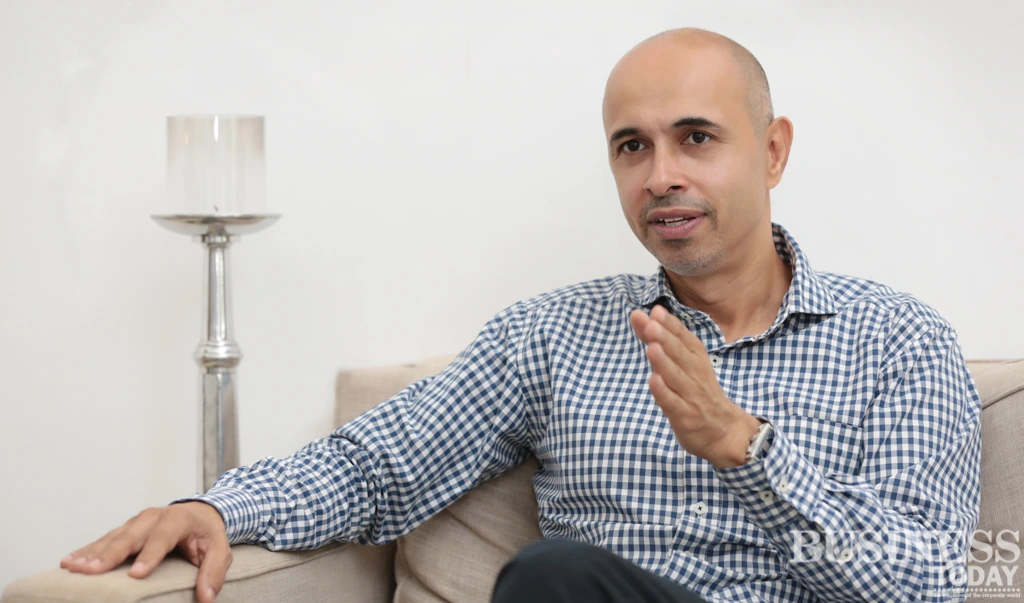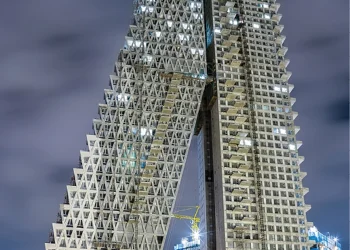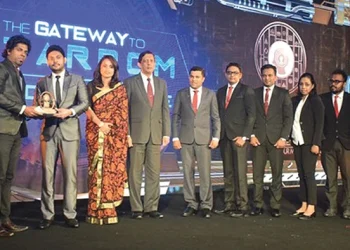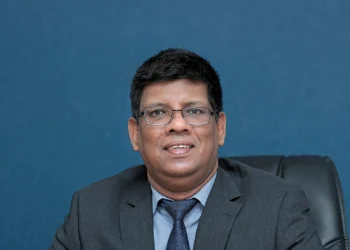
Colombo Fashion Week (CFW) has for 15 years revived, enhanced and propelled the Sri Lankan fashion industry into the future and provided exposure to Sri Lankan designers. The brainchild of Ajai Vir Singh, Creator, Founder and President, CFW has become an important platform for promoting Sri Lankan fashion design as well as his ethical direction has stimulated a discourse on sustainability and green fashion. In fact, Ajai Vir Singh introduced and coined the phrase ‘Garments Without Guilt’, which has helped position the country’s apparel industry as conscientious and aligned with ethical fashion. Looking back on the 15-year journey, Ajai Vir Singh is confident that the next 15 years of fashion development and CFW will hold greater promise for the industry as well as emerging designers.
By Udeshi Amarasinghe. Assisted by Keshini de Silva
Photography Mahesh Bandara and Menaka Aravinda
Could you tell us about the journey of Colombo Fashion Week and how it started?
It was between 1998 and 1999, when I first started to think about the possibility of creating a platform that could propel the fashion design industry in Sri Lanka, to be vibrant and progressive. Because looking around, Sri Lanka had a vibrant environment where creativity would flourish.
At that point, the influence of various creative personalities as well as artists of repute such as the 43 Group was strong. There was the architectural legacy of Geoffrey Bawa and the new architects emerging and following a certain trend. From the perspective of design sensibility there were strong protagonists like Shanth Fernando who launched Paradise Road and changed the landscape. Although everything was in place for the creative industries to flourish, I always felt that the fashion industry was not doing as well as it should have. I began to consider what we were doing or not doing. The industry had icons such as Barbara Sansoni and Ena De Silva. There were some designers who were masters in custom made occasion-wear and then masters like Buddhi Keerthisena who were progressive. But it was still not enough to bring it all together as an industry. It needed a vibrant ecosystem that incubated the new design generation and create an environment suitable for their growth from mentoring, guiding, promoting, retailing and craft integration. We also needed schools to facilitate the industry. The entire structure needed to be in place to enable the fashion industry to flourish.
There Was A Need For A Collection Of Designers, Education, A Certain Platform Where Designers Could Showcase Their Work, Fashion Media Could Generate Interest Among Fashion Consumers For Sri Lankan Designers.
There were retail stores, which carried good merchandise, however they were not designer merchandise. Most were surplus stock. That’s when I came to the realisation that I wanted to start something that would uplift the industry. I love fashion and it could be my contribution to society to which I find myself spiritually and emotionally bound to. At the time, I did not know it would become a fashion revolution similar to what it has become over the years. I realised there was a need for a collection of designers, education, a certain platform where designers could showcase their work, fashion media could generate interest among fashion consumers for Sri Lankan designers.
That’s when I introduced the concept to organise a fashion week that will draw people and become a platform for showcasing Sri Lankan fashion and designs.
At that time, one of the concerns was organising a fashion week in the middle of a conflict. Once we had decided to go ahead the next aspect was finding designers. Yolanda was one of the first designers I spoke with and introduced the concept. She had an established position and she could provide inspiration for younger designers to come forward.
Eventually, I mustered up all my strength and with my friend Prasad Bidapa, who is a partner to this day, set the wheel in motion. He understood my vision. When I shared my ideas with him, he was confident that this would become a possibility. Another friend Travice Ondaatjie, also came on board in 2003. That is how we started the journey of Colombo Fashion Week.
It Indicated That What We Had Progressively Created Over The Past 15 Years Is Not Merely An Event, But A Fashion Ecosystem, Which Was The Aim Of It.
The idea was to create a fashion week that was suited for Sri Lanka. The environment was such that you could not take a fashion week model from another country and implement it here in its entirety. It needed to be a pure fashion concept that could uplift the Sri Lankan industry. That was the starting point. The 2004 Tsunami was a set back for the industry and we had to take a break that year. For any big thing to come forth, there needs to be an incubation period of four to five years. It takes that time for anything to develop, hence many saw the challenges we encountered during those first few years. Today, everyone looks at Colombo Fashion Week’s journey and says it has been great. Like any journey, there are challenges which we faced too. After the first five years, things started to look up. Subsequently, fashion schools started opening up in Sri Lanka. The fashion consumers started appreciating the collections by Sri Lankan designers. The first signs that the business side of things were picking up was when designer boutiques started opening up. It indicated that what we had progressively created over the past 15 years is not merely an event, but a fashion ecosystem, which was the aim of it.
The bond between Colombo Fashion Week and Sri Lankan designers has been crucial. Could you talk about this collaborative journey?
In 2007, it was a young designer Darshi Keerthisena who showed her first collection and thrilled the fashion audience. The following year was Kanchana Thalpawila, then Charini and Sonali Dharmawardena. And this movement picked up steam. Colombo Fashion Week was working.
Previously, the market was small and people went overseas to buy designer clothes. Things started to change and Sri Lankan fashion consumers started to buy Sri Lankan designers. CFW started to influence their fashion choices. Sri Lankan fashion started to become a talking point. When there was movement in the industry, designer retail stores and multibrand stores with strong point of views, like PR, Trunk, The Design Collective, Zudhora and Aashiki opened. Designers such as Darshi Keerthisena, KT Brown, Sonali Dharmawardena, Charini, Indi and others opened their own stores. When designers have their own studios, it provides younger designers the opportunity to intern and learn. This in turn contributed to the ecosystem that we were creating.
Looking Back 15 Years Ago, We Would Not Have Been Able To Imagine What Has Been Created. It Was A Journey Of ‘Learning As We Go’ And We Continue To Learn. As We Mark Our 15th Year, I Can Safely Say That The First Stage Of Fashion Development Is Complete.
We needed a supply chain for the fashion platform, and one of the elements was the emergence of young designers. However, although young designers were studying, and the curriculum was good, they were not market ready. To ensure they understood the market, we needed to provide them with real life experiences. They needed to understand product relevance and consumer buying patterns. Therefore, the influence of senior designers in an industry is an important influence from the aspiration point of view.
CFW has emerged along with the interests of the fashion industry. How has this come about?
As the journey progressed, we decided to focus each year on a specific aspect of the industry. An area that we identified as needing more push and focus. For example, we decided to invite overseas designers to showcase at CFW to increase knowledge sharing and interaction with
Sri Lankan designers. Initially, many did not understand why we invited overseas designers. We invited a few in order to influence knowledge sharing between designers and provide an international feel to CFW.
At one point in the journey, we realised that there was a need for expertise to be shared and introduced. We launched knowledge workshops, where international, media personalities, photographers and documentary makers would host workshops so that young designers could learn and senior designers could also be a part of the knowledge sharing.
Subsequently, we saw the need for a retail infrastructure. There were surplus stock retail, so we attempted to create space for Sri Lankan designers so they would get noticed. This created a platform for designers who did not have the resources to open a retail store. Eventually, people started experimenting with this concept.
Looking back 15 years ago, we would not have been able to imagine what has been created. It was a journey of ‘learning as we go’ and we continue to learn. As we mark our 15th year, I can safely say that the first stage of fashion development is complete. There are around 30 established Sri Lankan designers, which was not the case 15 years ago. There is a platform to showcase what Sri Lankan fashion and talent is all about. In fact, to me, one of the biggest victories was young designers wanting to become fashion designers or be in the fashion industry. In the first five years this was a barrier as no one wanted to become a fashion designer. It was difficult to build a supply of designers in that environment. In 2010, we started intensifying programmes with universities. I invested more time in the search for students with potential at universities.
Therefore, the entire industry revived and emerged around the fashion platform. It is a revival; one that was progressively planned. There was a lot of hard work to push it forward. God has been very good to me. He kept opening doors for me.
As CFW marks 15 years, what is the outlook for the future?
As I stand at this juncture of 15 years, I am proud to look forward to the next 15 years of CFW. I believe 2019 will be very significant. We have identified three aspects of the industry that we want to focus on to ensure the industry shines. It will open opportunities for Sri Lankan designers internationally and create space for emerging young talent.
Last year, I was reappointed as a council member of the Commonwealth Fashion Council in London. They invited me to join the council in 2015, which is a two-year appointment. After considering the work and the impact, I was re-appointed. This is one important opportunity, among others, for the fashion industry in Sri Lanka. There are markets which can be opened to Sri Lanka; I also feel that the UK is an important market as they are more tuned towards Asia at the moment. For example, in 2018 I was able to provide an opportunity to Vathsala Gunasekara, who created a bag design from recycled cork material, which was presented in London. Similarly, if we can provide exposure for Sri Lankan designers, then talents in Sri Lanka can be promoted. It needs to be carefully planned and continue from the direction established 15 years ago. We are in a good position, with a unique retail format.
One of the areas that we will continue to focus on is building the commerce side of fashion designing. Commerce and creativity go hand-in-hand in fashion. Some designers, being creative people, miss out on the commerce side; while others tend to become too commercial. A fine balance needs to be maintained, especially for the benefit of young designers.
Positioning Sri Lanka as a destination for sustainable and ethical fashion has been an important aspect of CFW. How did this come about?
In 2005, a few years after I had started Colombo Fashion Week, the company that I headed at that time was hired as a promotion consultant by Sri Lanka Apparel. It was challenging and a lot of fun and working on this plan I coined the phrase ‘Garments Without Guilt’. It was a very interesting concept at the time, and it became very effective for Sri Lanka Apparel. This started the journey for nurturing Sri Lanka’s position as an ethical destination for sourcing. The country’s record was clean compared to the others in the region and it was manageable and it was a good base to start with. At the time, it was an aggressive stance, because we made a claim to something that was contrary to the global perception of Sri Lanka. Being surrounded by India, Bangladesh, Pakistan and China’. The campaign became one of the most effective in the world, and we were able to win a Global Effie. To date, Sri Lanka is the only entry from Asia to have won the Global Effie.
This concept remained close to my heart, however I did not impose it on Colombo Fashion Week because it requires discipline for any fashion designer to be completely ethical. Yet, I continued to encourage designers to become part of the sustainable fashion movement and change. In retrospect, I realised that Sri Lanka Apparel could have done more with the ‘Garments Without Guilt’ campaign because it received a strong global response with strong media international coverage.
In The Next 15 Years, Our Focus Will Be On International Exposure, Retail And Responsibility In Fashion. The Next Important Aspect Is The Development Of The Next Generation Of Fashion In Sri Lanka.
Two years ago I started working on creating a movement that is current and has the capacity to address and discuss issues and showcase some solutions – ‘The Responsible Fashion Movement’ that included designers, environmentalists, apparel manufacturers and other stakeholders from the supply chain. This is independent of Colombo Fashion Week.
In 2018, ‘The Responsible Fashion Movement’ launched the Responsible Fashion Summit, hosting two events, one in March and the second in July. We invited important stakeholders in global fashion such as the founder of London Fashion Week to visit Sri Lanka and see what we are doing and share ideas on how can we make Sri Lanka as a shining light for responsible fashion. Now we are preparing for the next edition of the Responsible Fashion Summit, which is planned for June 2019.
I feel Sri Lanka can take the lead in terms of sustainable, responsible fashion because no other country in Asia is pursuing this subject with the same intensity and vigour. Stakeholders such as MAS, Beira Group, Brandix and Hirdaramani are aligned on this path. I am confident that if we continue on this journey, we can carve out a path for Sri Lanka. Responsibility in fashion is important for consumers around the world.
What will be the focus of CFW in the future?
In the next 15 years, our focus will be on international exposure, retail and responsibility in fashion. Those are the key factors. The next important aspect is the development of the next generation of fashion designers in Sri Lanka. We need to address the question of getting them up to speed even quicker. We want to ensure the entire next generation is ‘green thinking’. We are mentoring them to progressively ‘think green’ and create good fashion. If we have a generation of green thinkers, then that is a strong step forward in the right direction.
Other aspects include building innovative detail in connection to sustainability and introducing traditional crafts to the entire equation. I am confident that Sri Lankan designers can utilise this plan to propel forward; the ingredients have been prepped and cooked for the industry to grow.





